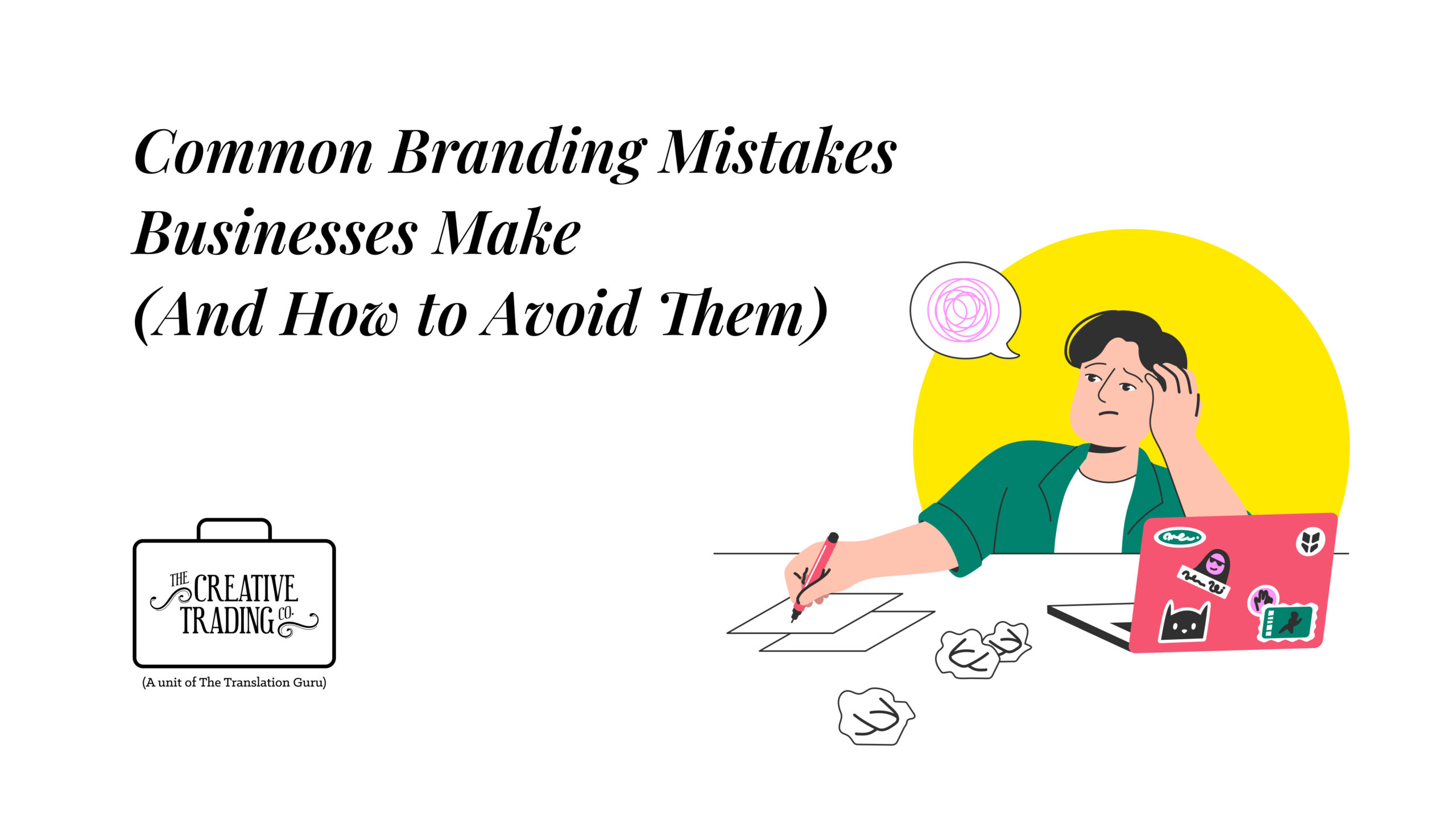Common Branding Mistakes Businesses Make (And How to Avoid Them)

Introduction: Navigating the Pitfalls of Brand Mismanagement
It's a common misconception that once a logo is designed, the branding work is done. In reality, many businesses, often unintentionally, make critical branding mistakes that can significantly undermine their market positioning, confuse their audience, and ultimately damage their reputation. These missteps can range from minor inconsistencies to fundamental strategic errors, all of which can lead to lost customers and diminished credibility. This deep dive will illuminate the most common branding pitfalls to avoid – and crucially, how partnering with expert branding services can provide the strategic guidance and creative execution needed to circumvent these costly errors.
Top Branding Mistakes: Identifying and Rectifying Errors
- Inconsistent Visual Identity: The Disjointed Brand Persona
- The Problem: This is perhaps the most prevalent and damaging mistake. It occurs when a brand uses different versions of its logo, varying font styles, inconsistent color palettes, or disparate imagery across different platforms (e.g., website, social media, print ads, packaging, email signatures).
- The Impact: Such inconsistency creates a fragmented and unprofessional image. Customers struggle to recognize and trust the brand, leading to confusion, a perception of disorganization, and a significant weakening of brand recall. It suggests a lack of attention to detail and can erode credibility.
- The Avoidance Strategy: Develop comprehensive brand guidelines (as discussed in Blog 2) and strictly adhere to them. Conduct regular brand audits across all touchpoints to ensure uniformity. Invest in professional design services that provide all necessary logo formats and design assets.
- Undefined Brand Voice: The Conversational Chaos
- The Problem: This mistake arises when the tone, language, and style of a brand's communication shift erratically. One day the brand might sound corporate and serious, the next overly casual and playful, creating a schizophrenic impression.
- The Impact: An undefined or inconsistent brand voice confuses the audience about the brand's personality, values, and professionalism. It makes it difficult for customers to form an emotional connection or understand what the brand truly stands for, leading to disengagement and a lack of trust.
- The Avoidance Strategy: Clearly define your brand's personality and voice during the brand strategy phase. Document this in your brand guidelines, including examples of appropriate and inappropriate language, tone (e.g., empathetic, authoritative, witty), and messaging style. Train all content creators and customer-facing teams on these guidelines.
- Ignoring Target Audience: The Message That Reaches No One
- The Problem: Many businesses fall into the trap of trying to appeal to everyone, or worse, they develop their brand identity without a deep understanding of their actual or desired target audience.
- The Impact: A brand that tries to speak to everyone effectively speaks to no one. Generic branding fails to resonate with specific segments, resulting in a diluted message, wasted marketing efforts, and an inability to build a loyal customer base. It can also lead to misaligned products or services.
- The Avoidance Strategy: Conduct thorough market research and create detailed buyer personas. Every branding decision – from visual design to messaging and content – should be informed by a clear understanding of your target audience's needs, desires, pain points, and preferred communication channels. Tailor your brand to speak directly and authentically to them.
- Skipping Brand Guidelines: The Recipe for Chaos
- The Problem: This is often an oversight by businesses that view brand guidelines as an unnecessary expense or a formality. Without a documented set of rules for brand application, different team members, departments, or external vendors will inevitably make independent decisions, leading to the inconsistency mentioned in point 1.
- The Impact: The lack of brand guidelines leads to ad-hoc, uncoordinated branding efforts. This results in a diluted brand image, wasted resources on re-dos, and a significant loss of control over how your brand is perceived in the market. It also makes scaling branding efforts incredibly difficult.
- The Avoidance Strategy: Invest in creating comprehensive brand guidelines as part of your core branding process. Ensure these guidelines are accessible to everyone involved in brand representation and that they are regularly updated. Consider implementing a Digital Asset Management (DAM) system to centralize and control brand assets.
- Neglecting Emotional Storytelling: The Brand Without a Soul
- The Problem: Businesses often focus solely on the rational benefits of their products or services – listing features, specifications, and price points – while overlooking the crucial role of emotional connection.
- The Impact: While facts are important, they rarely inspire loyalty. Brands that neglect emotional storytelling come across as transactional, unmemorable, and interchangeable. They fail to build a deeper connection with their audience, resulting in lower customer retention and advocacy.
- The Avoidance Strategy: Embed compelling emotional storytelling at the heart of your brand strategy. Identify your brand's unique narrative, purpose, values, and how it impacts customers' lives. Use this story consistently across all marketing and communication channels, focusing on benefits that evoke feelings and aspirations, rather than just features. Humanize your brand.
Conclusion: Safeguarding Your Brand's Future
Avoiding these common branding mistakes is not merely about preventing errors; it's about proactively building a stronger, more resilient, and more resonant brand. These missteps can have tangible costs, from confused customers to lost credibility and market share. Engaging professional branding services is a strategic investment that ensures clarity, fosters consistency, and cultivates deep emotional connection with your audience – essential pillars for sustained success and lasting brand equity in a competitive marketplace.
Quick FAQ
- Q: What is the biggest branding mistake to avoid?
- A: The biggest branding mistake to avoid is inconsistent brand identity across all channels, as it directly undermines trust, recognition, and professionalism.
- Q: Why is brand voice important?
- A: Brand voice is important because it shapes how customers emotionally connect with your business, conveying its personality, values, and professionalism through consistent tone and language.